As a homeowner, nothing can be more stressful than the sound of dripping water coming from your roof. Not only can a roof leak cause costly damage, but it can also be a sign of an underlying structural problem with your home. Fortunately, there are ways to fix and prevent roof leaks before they become an even bigger issue. In this article, we will discuss tips and tricks for fixing your home’s roofing issues and how to stop roof leaking in the future. With the right knowledge and prevention techniques, you can ensure that your roof is safe from unwanted water damage and save yourself from unnecessary stress.
Disclaimer: While this article provides helpful tips and tricks to help you fix your roofing issues, it should not be taken as professional advice. It is important to keep in mind that each roof repair job is unique and will require different tools and techniques depending on the type of roof you have. For this reason, we recommend consulting with a professional roofing contractor to get tailored advice for your specific case. Here at Advance Roofing LLC, we are always happy to help with any of your roofing needs! For many years now, we have been proudly providing the Spokane, WA area with top-notch quality roofing solutions.
Definition of Roof Leak
A roof leak is defined as any water that enters a structure through the roof, including rain and condensation. Roof leaks can be caused by a variety of factors, including cracked or missing shingles, broken flashing, damaged gutters, worn seals around vent pipes or chimneys, or even animal damage. A small roof leak can quickly turn into a major issue if left unchecked, leading to costly repairs and water damage to the interior of your home. It is important to identify and repair any roof leaks as soon as possible in order to avoid further damage.
If you suspect that you have a roof leak, it is best to call in an experienced professional who can inspect your roof for signs of wear and tear. An experienced contractor will be able to spot areas where water may be entering your home and recommend the best course of action for making repairs. Additionally, they can help you identify potential problems before they become serious issues so that you can take steps towards preventing future leaks from occurring.
It’s important to be proactive about your roof and its potential for leaks. Ignoring signs of a leak can create costly damage in the long run, so be sure to inspect your roof regularly and call an experienced contractor if you suspect any sort of issue. Stay tuned for our next article which will explore the various reasons why roofs can develop leaks!
Reasons for Roof Leakage
It’s important to understand the various reasons why roofs can develop leaks in order to take proactive steps towards preventing them in the first place.
Common causes of roof leakage include cracked or missing shingles, broken flashing, worn seals around vent pipes or chimneys, damaged gutters, and even animal damage.
Poorly maintained roofs can also be more prone to leaking due to inadequate sealing and caulking, corroded metal components, and other signs of wear and tear.
Additionally, older roofs with significant age may need more frequent maintenance due to aging materials that are less resistant to weathering and deterioration.
By understanding the common sources of roof leakage, you can better prepare yourself for any potential issues that might arise.
Prevention Tips
Prevention is always the best course of action when it comes to avoiding roof leaks.
Regularly inspect your roof for any signs of damage and take action promptly if you spot any potential issues.
Make sure that all flashing, gutters, and seals around vents and chimneys are properly maintained and in good condition.
Be sure to check the shingles periodically for cracks or missing pieces, as well as looking out for any animal damage that may have occurred.
In addition to these preventive measures, homeowners should also consider investing in a quality roof coating or sealant that will help protect against future leaks.
Finally, it’s wise to schedule regular professional inspections of your roof so that any potential problems can be identified early on before they become major issues.
Caring for your roof is an important part of protecting your home from costly damage, and by taking a proactive approach with preventive measures and regular inspections, you can help ensure that your roof will remain watertight for years to come. Now that you know the importance of prevention, let’s look into how regular inspection and maintenance can keep your roof in top condition!
Regular Inspection and Maintenance
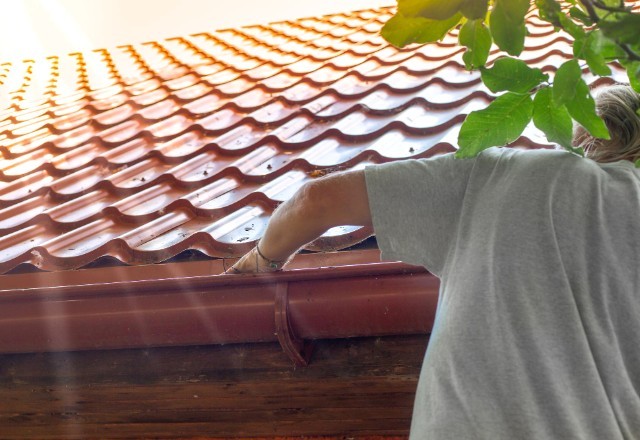
Regular roof inspection and maintenance is key to avoiding future roof leaks. It’s important to have a professional inspect your roof every few years, or more often if you live in an area of extreme weather or high wind speeds. During the inspection, they’ll check for any signs of damage such as cracked or missing shingles, damaged flashing, compromised gutters, and any other issues that might lead to a leak.
In addition to regular inspections, it’s also important to keep up with basic maintenance tasks such as cleaning out gutters, checking sealants around vents and chimneys for cracks or wear-and-tear, and replacing worn shingles as necessary. Doing all this can help extend the life of your roof and prevent costly repairs down the line.
Finally, investing in a quality roof coating or sealant can help protect against future leaks by providing an extra layer of protection against water damage. This simple step can make all the difference when it comes to protecting your home from costly repairs due to roof leaks!
Check for Roof Damage Regularly
Regular roof inspections are essential for avoiding costly repairs due to leaks. It’s important to check your roof regularly for any signs of damage such as cracked or missing shingles, worn flashing, and compromised gutters. If you notice anything out of the ordinary during your inspection, it’s important to get it fixed as soon as possible. Minor damages can easily become bigger problems if left untreated for too long.
It’s also a good idea to take a look at your roof after any major weather events such as heavy rains, strong winds, or hail storms. These types of conditions can cause significant damage that can be difficult to detect without an experienced eye. Make sure you have a professional inspect your roof if you suspect that something may be wrong.
Finally, make sure you keep up with basic maintenance tasks such as cleaning out gutters and checking sealants around vents and chimneys for cracks or wear-and-tear. Doing these small things can help extend the life of your roof and save you from costly repairs down the line.
Ensure Proper Ventilation
Proper ventilation is one of the most important steps to take when trying to prevent roof leaks. Without adequate ventilation, warm air can become trapped in your attic, leading to excessive condensation and moisture buildup. This in turn can lead to mold growth, wood rot, and even roof leaks.
It’s important to make sure that your attic has proper ventilation in order to keep your roof and home healthy. To ensure this, you should check that there are enough soffit vents in place around the eaves of your roof and make sure they are not blocked by insulation or debris. Additionally, it’s a good idea to install an attic fan or other form of mechanical ventilation if necessary.
Finally, when installing new shingles be sure to use ones with built-in ventilation features such as a ridge vent system. This will allow hot air from the attic to escape through the top of your roof more easily which will reduce the chance of moisture buildup and subsequent leaking problems.
Install Flashing and Gutters Properly
Installing flashing and gutters properly is an important part of protecting your home from water damage caused by roof leaks. Flashing is a thin sheet metal that is used around the edges of your roof to help keep water out. Properly installing flashing will ensure that water runs off the roof instead of seeping in through any gaps or seams. Additionally, it’s important to make sure your gutters are in good condition and properly installed. Gutters collect rainwater from your roof and direct it away from your house which can help prevent basement flooding and other costly water damage problems.
For best results, hire a professional contractor to install both the flashing and gutter system on your home’s roof as they will be able to ensure that everything is done
correctly. If you decide to do it yourself, make sure you are using quality materials that are specifically designed for this purpose. Also, be sure to follow all instructions carefully when installing either product as improper installation can lead to leaks and costly repairs down the road.
Invest in Quality Materials
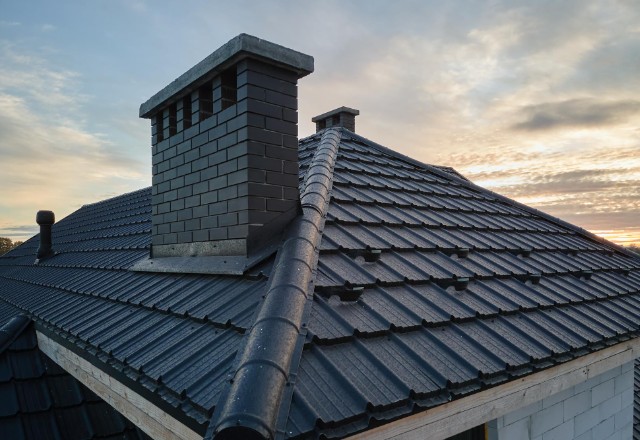
Investing in quality materials is essential for making sure your roof is leak-proof. Quality materials are designed to last longer and be more resilient against the elements, such as wind, rain, and snow. They also provide a better protection against water damage caused by roof leaks. Furthermore, quality materials will often come with longer warranties which can provide peace of mind and reduce any worry about future repairs or replacements.
When shopping for roofing materials, look for products that are made from durable materials such as asphalt shingles or metal roofing. These types of roofing materials will be able to withstand extreme weather conditions and offer a better level of protection than cheaper alternatives. Additionally, make sure you check the manufacturer’s warranty information before buying anything so that you understand the coverage you are getting and what it covers in case of an issue down the road.
Ultimately, investing in quality materials when it comes to your home’s roofing is always a wise choice as it ensures that your home has proper protection from potential water damage due to roof leaks.
Hire Professional Help when Necessary
When it comes to fixing roof leaks, some people prefer to take on the project themselves while others look for professional help. Depending on the size and complexity of the problem, hiring a professional may be necessary in order to ensure that the job is done properly. Professional roofers have years of experience and can detect issues that amateurs may miss or overlook. They also have access to specialized tools and equipment that make the job easier. In addition, professionals can provide advice about what kind of materials should be used for the job, as well as proper installation techniques.
Ultimately, if your roofing issue is beyond your capability or you want to ensure that it’s done correctly, hiring a professional roofer is always a good choice. It may cost more upfront, but it’s worth it for peace of mind knowing that your home is safe from water damage due to roof leaks.
Identifying Problem Areas on Your Roof
Identifying problem areas on your roof can be an intimidating task. Fortunately, there are some easy ways to identify potential issues before they become serious problems.
Start by visually inspecting your roof for signs of damage such as broken or missing shingles, gaps in the flashing, or cracked sealant. You should also check for any clogged gutters or debris buildup around the edges of the roof. If you notice any of these signs, it’s important to have them addressed as soon as possible.
It’s also a good idea to have a professional inspect your roof at least once a year. They will look for signs of wear and tear that may not be obvious to the untrained eye. A professional can also inspect any ventilation systems and make sure that all components are working properly. This could help to prevent future issues with mold, mildew, and other moisture-related problems.
Finally, don’t forget to investigate any strange noises coming from your roof. These could be caused by something as simple as a loose nail head or something more serious like a broken tile or damaged rafters. In either case, it’s best to get it checked out quickly so you can avoid more costly repairs down the line.
By taking the time to regularly inspect your roof, you can help ensure that any potential issues are identified and addressed before they become a bigger problem. So don’t wait until it’s too late – take the proactive approach and protect your home today! And for an even more comprehensive look into your roofing needs, be sure to check out our next section on Look From the Inside Out.
Look From the Inside Out
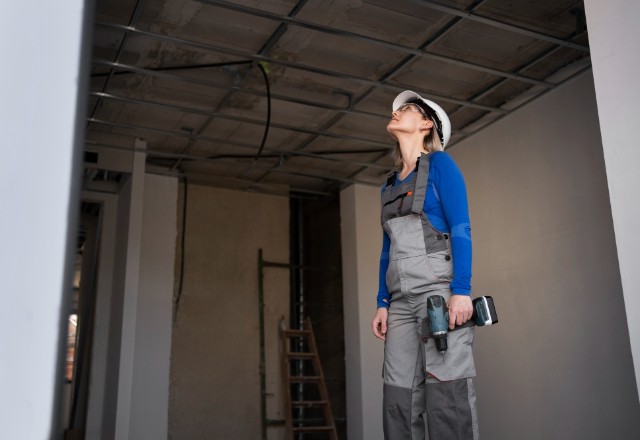
If you want to get the most out of your roof inspection, then it’s important to look from the inside out. This means taking a closer look at all of the components that make up your roofing system, such as insulation, ventilation, and other components. By doing so, you can spot potential issues early on and take steps to fix them before they become major problems.
For example, you may find gaps in your insulation that need to be filled or an issue with your ventilation system that needs to be addressed. No matter what the problem is, it’s essential to have a professional come in and inspect your roof from the inside out so that any issues can be quickly identified and resolved. Doing so will help extend the life of your roof and ensure that it continues to keep your home protected for years to come.
Look For Signs of Water Damage On The Exterior Surfaces
If you’re looking for signs of water damage on the exterior surfaces of your home, then it’s important to pay attention to any discoloration or sagging that may be present. This can be a sign that there is a leak somewhere in your roofing system. Additionally, you should also look for any signs of mold or mildew growth, as this could also indicate a potential issue with your roof.
Another thing to look out for are any areas where the shingles have begun to come loose or curl up – this could be an indication that they are no longer waterproof and need to be replaced. Finally, if you spot any water stains on your ceiling or walls inside of your home, then this could be an indication that the leak has already caused some damage – so it’s essential to call in a professional right away. By keeping an eye out for these warning signs, you can prevent minor issues from turning into major problems.
Inspect Vents, Gutters, Flashings and Chimneys For Potential Issues
Inspecting your vents, gutters, flashings and chimneys for potential issues is an important part of keeping your roof in top condition. It’s important to check the condition of the vents, gutters, and flashings thoroughly to make sure they are properly sealed and functioning correctly. This will help ensure that water isn’t entering your home through any of these areas.
Additionally, inspecting your chimney can help you identify any potential problems with the flashing or mortar joints. If you notice any cracks or crumbling mortar, then it’s essential to call in a professional right away as this could be a sign of a more serious issue. Finally, don’t forget to clean out any debris from your gutters so that water is able to flow freely during storms – otherwise this could cause damage or leaks in the future. By regularly checking all of these different components of your roofing system, you can stay one step ahead of any potential issues that may arise down the line.
Assessing the Damage on Your Roofing System
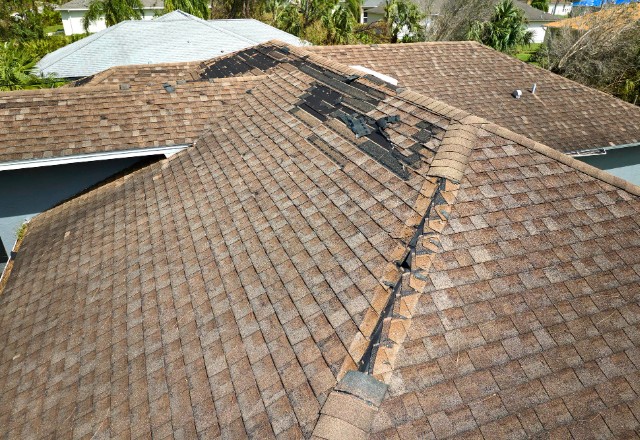
Assessing the damage on your roofing system is an important step in stopping roof leaks. Start by looking for signs of water damage, such as discoloured ceilings or walls, damp patches around windows and doors, and mould or mildew growth. In addition to this visual inspection, use a ladder to take a closer look at the entire surface of your roof and look for any cracked shingles or tiles, gaps in the flashing, or missing sealant around vents and pipes.
You should also pay close attention to any unexplained wet spots that could be caused by a leaky pipe or other issue. If you’re not sure what to look for, it’s best to call in a professional who can diagnose the problem correctly. Assessing the damage on your roofing system is critical if you want to prevent costly repairs down the line – so don’t hesitate to get help if needed!
Having a water-resistant roof is key to avoiding costly repairs; so don’t forget to assess the damage of your roofing system, and call in a professional if needed. Now that you know how to identify potential issues, it’s time to determine the extent of the damage – stay tuned for our next article!
Determine the Extent of the Damage
Determining the extent of roof damage is an important step in stopping roof leaks. Once you’ve done a visual inspection and identified any potential issues, it’s time to take a closer look at the affected areas. If your roof has cracked tiles or shingles, check to see how deep the cracks are as well as if any water has managed to make its way in. You should also check for any crumbling mortar around flashing and chimney joints, as well as any missing sealant around vents and pipes that could be letting moisture in. If you’re not sure what to look for, it’s best to call in a professional who can accurately diagnose the problem and advise on the best solution. It’s essential to know the extent of the damage on your roofing system – so don’t hesitate to get help if needed!
Analyze The Type of Repair Needed
Once you’ve determined the extent of the damage, it’s important to analyze the type of repair needed. If you have small, isolated areas of damage, a simple patch-up job might be enough to stop the leak. However, if you’ve identified extensive damage or multiple areas that need attention, then it might be necessary to re-roof or replace shingles. In addition to visual inspection, it’s important to take into account how old your roof is and how much life it has left. If your roof is near the end of its lifespan, then it may make more sense to replace rather than repair. Ultimately, only an experienced professional can advise on the best course of action for your particular situation – so don’t hesitate to get help if needed!
Fixing Common Types Of Roof Leaks & Repairs
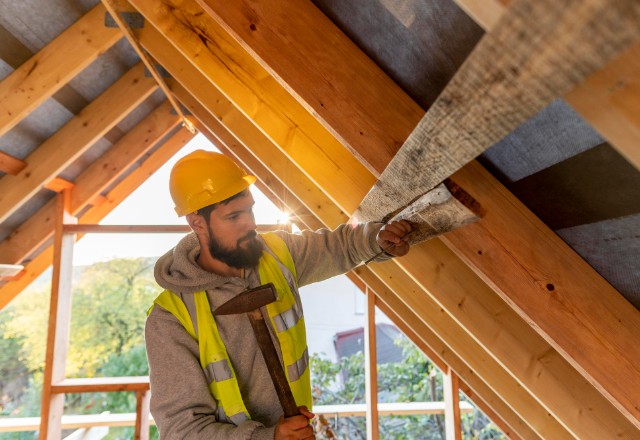
No matter what type of roof you have, chances are that eventually it will need some form of repair. Common types of roof leaks and repairs include fixing broken or missing shingles, patching holes, replacing flashing, and re-sealing seams. Depending on the severity of the damage and the age of your roof, it may be possible to make a simple patch-up job. However, if there is extensive damage or multiple areas that need attention then it might be necessary to replace or re-roof certain sections.
It’s important to consult with a professional before attempting any kind of roof repair job – especially if you’re unsure about what needs to be done. This will ensure that the job is done properly and efficiently as well as preventing further damage from occurring. Once the repair has been completed, make sure to check for any signs of leaking or other problems in order to catch issues early on. With regular maintenance and careful inspection you can help keep your roof in great condition for years to come!
Making sure your roof is in proper condition is essential to protecting the safety of your home. With the right care and maintenance, you can help ensure that your roof will be a reliable source of protection for years to come. But when things do go wrong, make sure you consult a professional to get the job done right. And coming up next, we’ll discuss some of the tools and materials you’ll need to fix a leaky roof!
Tools & Materials You Will Need to Fix a Leaky Roof
Having the right tools and materials on hand is essential for any roof repair job. Depending on the type of leak, you will likely need to have some combination of tar, felt or rubber sheeting, nails, caulking, roof cement, shingles and a hammer. Additionally, if you are planning to do any kind of patching or re-roofing then you may also need additional materials such as roofing paper and screws.
Before starting any kind of roof repair job it’s important to make sure that you have all the right tools and supplies on hand. It’s also helpful to read up on the details of your particular repair project before beginning in order to ensure that everything goes as smoothly as possible. Performing regular maintenance checks is also a great way to catch leaks early so they can be fixed before they become a serious problem!
Overall, roof repairs can be a daunting task, but the right tools and supplies can help make it much easier. With the proper preparation and knowledge, you can confidently tackle any roof repair job to keep your home looking its best! Now that you have all the information, let’s dive into the conclusion to wrap up this helpful guide!
Conclusion
The conclusion of this helpful guide is that roof repair jobs can be daunting but with the right tools and supplies, a little bit of knowledge, and regular maintenance checks you can confidently tackle any roof repair job. When it comes to roof repairs, preparation is key, so make sure you have all the materials needed before starting your project.
Additionally, reading up on the details of your particular repair job will help ensure that everything goes as smoothly as possible. With these tips in hand you should now feel confident about fixing any leaking roofs!



 509-201-4190
509-201-4190
